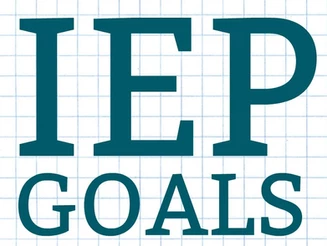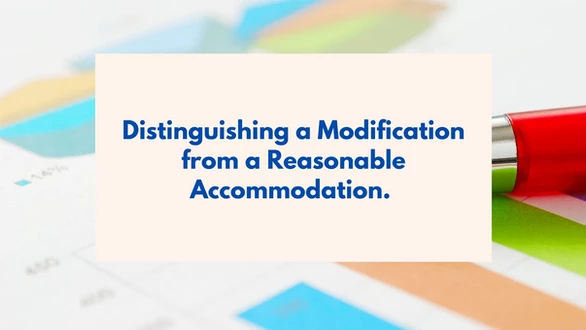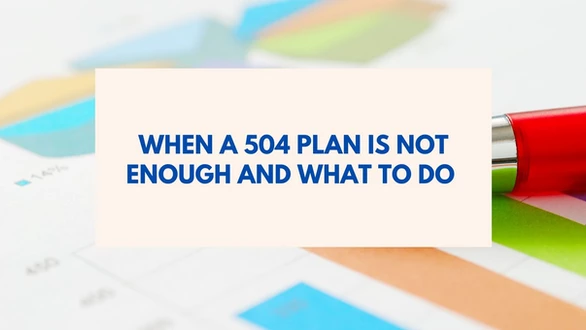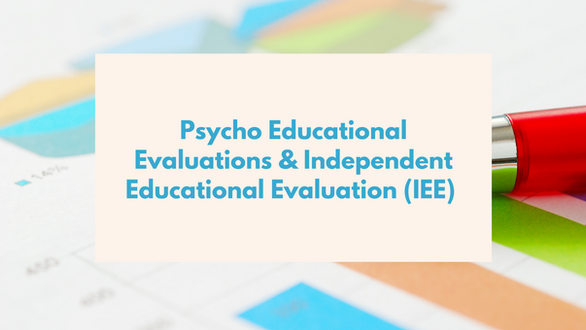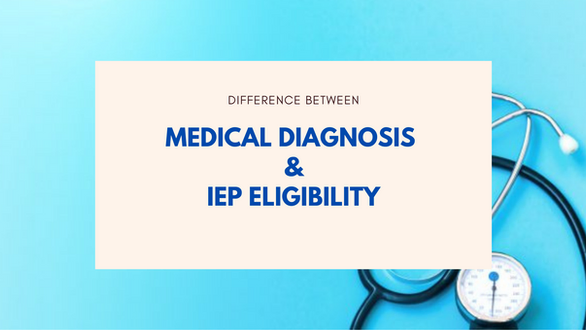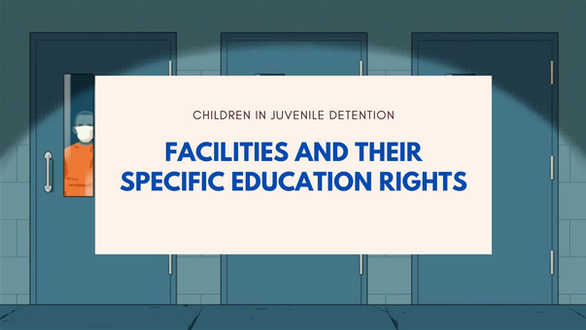If you are like many parents, you feel anxious and insecure at IEP meetings. What do you know? What can you offer? What should you do? Some parents believe that if they are not educators, they have nothing of value to offer in planning their child’s educational program. Other parents realize that their child’s IEP is not appropriate but do not know how to resolve the problem. Well, if you belong to any of these groups, this article should shed some light.
WHAT IS AN IEP ANYWAY?
An IEP is an individualized education program that is: specific, measurable, filled with action words, realistic and relevant, and time-limited.
The whole point of having an IEP is to help your child reach state grade-level standards. To do that, the IEP team will set annual goals and measure improvement against those goals.
Understanding IEP Goals
IEP goals are the specific details in your child’s plan that describe what they should accomplish during the school year. Since IDEA (The Individuals with Disabilities Education Act) does not dictate what should be addressed in a child’s plan, the details are up to the team. This gives the IEP team great flexibility when developing what is appropriate for each child.
Your child’s IEP will have annual goals that lay out what he’ll be working toward over the school year. To help him get the most out of the IEP, those goals shouldn’t be vague or general. Instead, they should be SMART: Specific, Measurable, Attainable, Results-oriented and Time-bound.
IEP goals should enable the child to learn the basic skills that are necessary for the child to be independent and self-sufficient. These basic skills include:
Communication skills
- Social skills and the ability to interact with others
- Reading skills
- Math Skills
- Attentional Focusing
- Executive Functioning and Organization
- The child must learn to communicate. Most children communicate by expressive and receptive speech. Some children use assistive technology to communicate. The child must learn social skills so he or she can interact with other people. Finally, the child must learn to read. Reading is the gateway to all other knowledge.
ESSENTIAL COMPONENTS OF SMART IEP GOALS
The Individuals with Disabilities Education Act of 2004 describes how IEPs should be developed. IEP goals cannot be broad statements about what a child will accomplish in a year, but must address the child’s academic achievement and functional performance. The IEP must identify the entire child’s needs, how the school will meet these needs, and how the school will measure the child’s progress.
Setting annual IEP goals takes more than just knowing where your child’s skills are now. It also means knowing what skills need work to make progress toward grade-level standards. As an equal member of the IEP team, it’s important for you to understand and be involved in the process of setting goals.
Let’s examine the components of smart IEP goals:
Specific
SMART IEPs have specific goals and objectives. Specific goals target areas of academic achievement and functional performance. They include clear descriptions of the knowledge and skills that will be taught and how the child’s progress will be measured. Look at these two goals. Which one is specific? Can you guess?
- Brandon will increase study skills for academic success.
- Brandon will demonstrate the following study skills: skimming written material and use reference materials in social studies class.
Measurable
SMART IEPs have measurable goals and objectives. Measurable means you can count or observe it. Measurable goals allow parents and teachers to know how much progress the child has made since the performance was last measured. With measurable goals, you will know when the child reaches the goal. Which of these two goals is measurable and observable? Can you guess?
- Brandon will improve his reading skills.
- Given second grade material, Brandon will read a passage of text orally at 110- 130 wpm with random errors.
Action Words
This include three components that must be stated in measurable terms:
(a) direction of behavior (increase, decrease, maintain, etc.)
(b) area of need (i.e., reading, writing, social skills, transition, communication, etc.)
(c) level of attainment (i.e., to age level, without assistance, etc.)
Which of these goals is specific, measurable and includes action words? Can you guess?
- Brandon will decrease his anger and violation of school rules.
- Provided with anger management training and adult support, Brandon will be able to remove himself from environments that cause him to lose control of his behavior so that he has no disciplinary notices.
Realistic and Relevant
SMART IEPs have realistic, relevant goals and objectives that address the child’s unique needs that result from the disability. IEP goals are not based on district curricula, state or district tests, or other external standards.
Time-limited
SMART IEP goals and objectives are time-limited. What does the child need to know and be able to do after one year of special education? What is the starting point for each of the child’s needs (present levels of academic achievement and functional performance)? Time-limited goals and objectives enable you to monitor progress at regular intervals. Assume your child is in the fifth grade. Brandon’s reading skills are at the early third grade level. Here is a specific, measurable, time-limited goal that tells you what Brandon can do now and what he will be able to do after one year of special education:
“Present Level of Performance: Given third grade material, Brandon reads 50-70 wpm with 4-6 errors.
Annual Goal: Given fifth grade material, Brandon will read 120 wpm with only random errors. To ensure that Brandon meets his goal, we will measure his progress at nine-week intervals (4 times during the school year).
- After 9 weeks, given third grade material, Brandon will read 110 to 120 wpm with 1-3 errors.
- After 18 weeks, given fourth grade material, Brandon will read 70-100 wpm with 1-3 errors.
- After 27 weeks, given fifth grade material, Brandon will read 70-100 wpm with 1-3 errors.
- At the end of the year, Brandon will read 120 wpm with only random errors.”
How to Monitor Progress Moving Forward
Did you know that the school must inform you about your child’s educational progress at regular intervals? In fact, your child’s IEP must include: a description of how the child’s progress toward meeting the annual goals — will be measured and when periodic reports on the progress the child is making toward meeting the annual goals (such as through the use of quarterly or other periodic reports.
Keep in mind; you don’t have to wait until the yearly IEP meeting to see how your child is progressing toward IEP goals.
Your school should provide progress reports during the year—at least as often as when report cards are issued. Ask the IEP team when you can expect to receive those updates on your child’s progress.
LEGAL REMEDIES FOR THE PARENTS OF SPECIAL EDUCATION STUDENTS
Three federal laws protect the rights of people with disabilities. These laws are the Americans with Disabilities Act (ADA), the Individuals with Disabilities Education Act (IDEA), and Section 504 of the Rehabilitation Act. But more specifically, as the nation’s special education law, IDEA provides rights and protections to children with disabilities and to their parents or legal guardians. Learning your rights under IDEA can make it easier to get the help your child needs (and is legally entitled to) at school. Also, by understanding these laws and your child’s rights, you’ll know better how to defend him or her against unfair or discriminatory treatment. Let us examine the three federal laws:
Individuals with Disabilities Education Act
Enacted in 2004, the Individuals with Disabilities Education Act ensures that all qualifying children with disabilities have access to a free and appropriate public education. The law outlines the special education benefit, including individualized special education services. States have different procedures for implementing the law, but they all must be consistent with the IDEA. In accordance with the six basic principles outlined in Part B of the IDEA, schools must:
- Provide free and appropriate public education.
- Conduct an evaluation.
- Produce an individualized education program.
- Provide the least restrictive environment.
- Offer opportunities for meaningful participation.
- Implement procedural safeguards.
Americans with Disabilities Act
The Americans with Disabilities Act of 1990 provides civil rights protections to individuals with disabilities. Though the ADA does not specifically name all of the impairments that are covered. Title II of the ADA “prohibits discrimination on the basis of disability by public entities, including public elementary, secondary, and postsecondary schools, regardless of whether they receive federal financial assistance. Title II requires that qualified individuals with disabilities, including students, parents, and other program participants, are not excluded from or denied the benefits of services, programs, or activities of a public entity, or otherwise subjected to discrimination by a public entity, by reason of a disability.”
Section 504 of the Rehabilitation Act of 1973
Section 504 of the Rehabilitation Act of 1973 protects the rights of people with disabilities in programs and activities that receive federal financial assistance, including federal funds. Public school districts, institutions of higher education, and other state and local education agencies may all be recipients of these funds.
Section 504 helps children with disabilities to access school services by requiring schools to provide accommodations and modifications. But, unlike IDEA, it does not provide for an individualized education program.
WHAT TO DO IF THE SCHOOL ISN’T FOLLOWING YOUR CHILD’S IEP
Following an IEP is not a school’s choice to make. It’s the law. But if that’s not happening, for whatever reason, there are a number of things you can do—starting with talking to your child’s teacher.
If after that your child’s IEP still isn’t being followed, request an IEP team meeting to discuss your concerns. (To get guidance ahead of time, you can speak to your local Parent Training and Information Center. You can also bring an advocate to the meeting with you.)
At the meeting, go over your conversation with the teacher and the administrator with the whole team. Provide specific examples from the journal.
Let the team know that it’s unacceptable that the teacher does not follow the IEP. Ask about how the team will intervene to ensure compliance with the IEP, and what concrete steps will be taken. Also ask for a team member to be assigned to closely monitor the situation.
Then schedule a follow-up IEP meeting for a few weeks later. At that meeting you can all assess the effectiveness of the team’s plan together.
CONCLUSION
The whole point of having an IEP is to help your child reach state grade-level standards. If the IEP does not include measurable academic and functional goals, the IEP is defective and open to a challenge that it denies the child a FAPE.

